nature
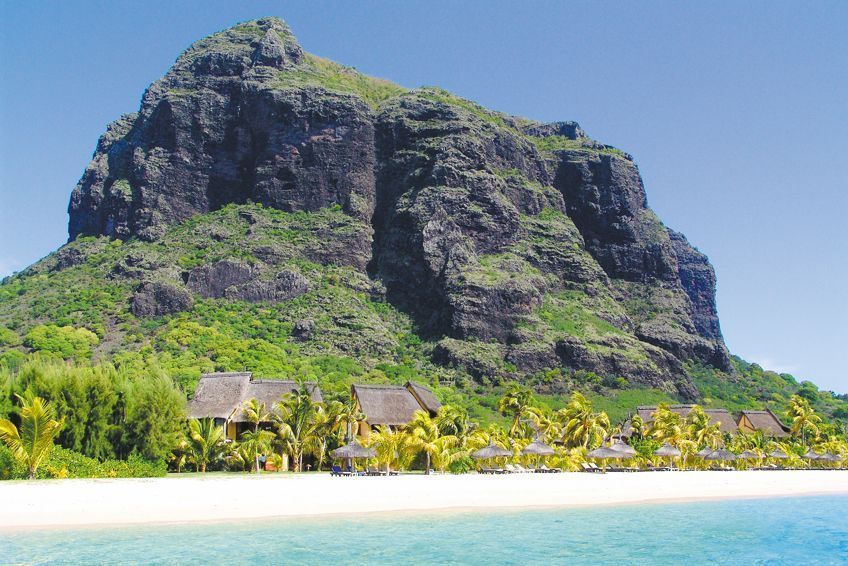
Le Morne Brabant
Le Morne Beach is one of Mauritius’s most iconic and scenic natural sites, renowned for its breathtaking beauty and historical significance. Located on the southwestern tip of the island, it is framed by the majestic Le Morne Brabant Mountain, a UNESCO World Heritage site. The beach itself is a paradise of powdery white sand and crystal-clear waters, making it a popular destination for tourists and locals alike.
Historically, Le Morne holds deep cultural and emotional significance for the people of Mauritius. During the period of slavery, it was a refuge for runaway slaves who sought freedom in the mountains and remote areas. The mountain, particularly, was a symbol of resistance, as many slaves would hide there to escape capture. Today, the site serves as a poignant reminder of Mauritius’s struggles for freedom and the resilience of its people.
Le Morne Beach not only offers natural beauty but is also a place where history, culture, and nature converge, making it a symbol of both the island’s past and its vibrant present.
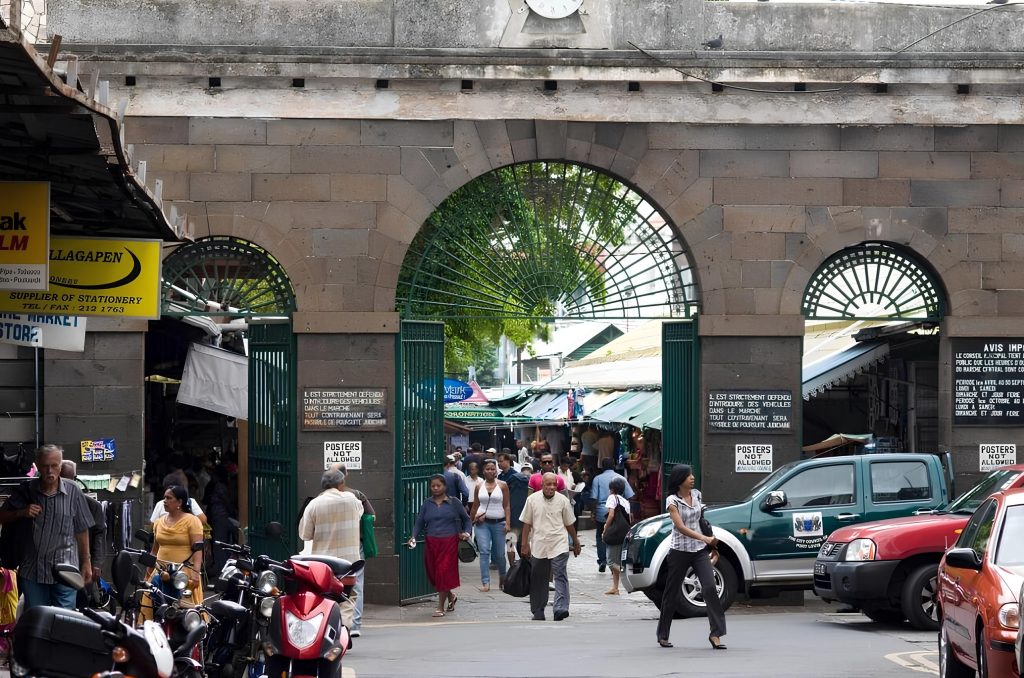
Central Market Port Louis
The main gate of the Central Market in Port Louis is an excellent example of colonial architecture, showcasing the historic charm and cultural heritage of Mauritius. Built in the early 19th century, this iconic structure reflects the architectural style and influences of the British colonial period. The entrance features arched openings, ornamental details, and an imposing façade that has welcomed visitors and traders for nearly two centuries.
As one of the island’s oldest and most vibrant marketplaces, the Central Market remains a bustling hub for locals and tourists alike. Inside, visitors can explore an array of fresh produce, spices, textiles, and artisanal crafts, all under the historical roof of this colonial-era structure. The main gate of the market stands as a testament to Mauritius’s colonial past and has become a beloved landmark symbolizing the island’s cultural diversity and the enduring spirit of Port Louis.
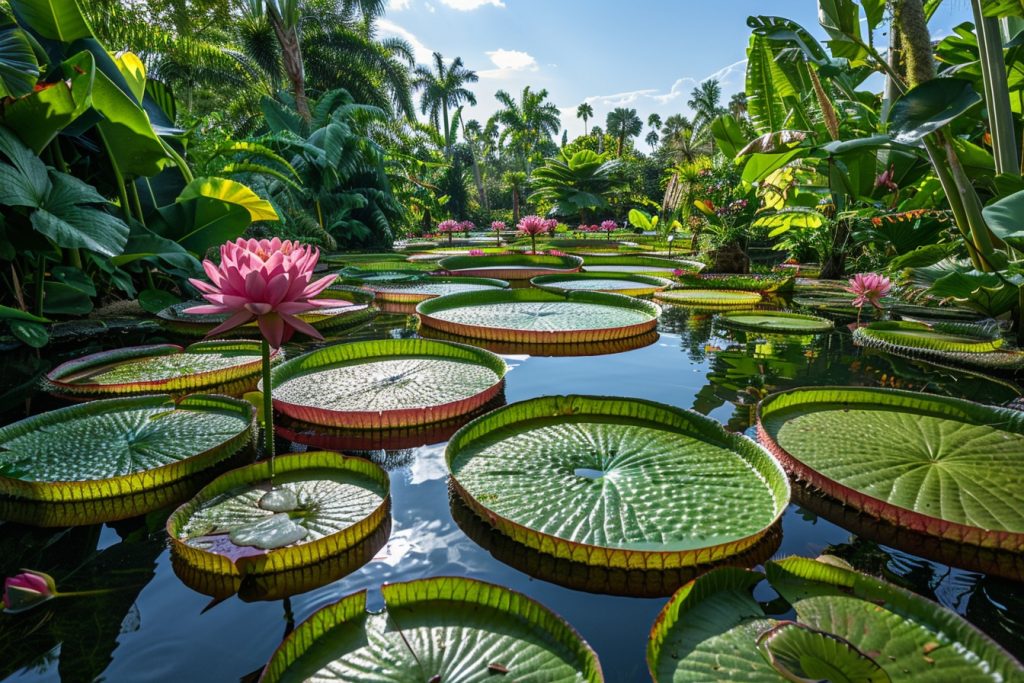
Pamplemousse Botanical Garden
The Pamplemousses Botanical Garden, officially named Sir Seewoosagur Ramgoolam Botanical Garden, is one of Mauritius’s most treasured historical sites and the oldest botanical garden in the Southern Hemisphere. Established in 1770 by French governor Pierre Poivre, the garden originally served as a hub for acclimatizing valuable plants such as spices, medicinal plants, and exotic species brought from across the world.
Spanning over 37 hectares, the garden is renowned for its breathtaking variety of flora, including giant water lilies, towering talipot palms, and countless rare and endemic species. It also hosts an impressive collection of trees planted by world leaders, symbolizing its global significance.
Visitors are drawn to its serene pathways, peaceful ponds, and majestic greenery, making the Pamplemousses Botanical Garden not only a botanical wonder but also a vital part of Mauritius’s natural and colonial history.
Source: https://www.google.com/imgres?q=pamplemousse&imgurl=https%3A%2F%2Flemandalamoris.com%2Fwp-content%2Fuploads%2F2024%2F03%2Fdecouverte-du-jardin-depamplemousse-sur-l26rsquo3Bile-maurice-1024×683.jpg&imgrefurl=https%3A%2F%2Flemandalamoris.com%2Fen%2Fdiscovering-the-pamplemousse-garden-in-mauritius%2F&docid=8bKu3dk9
K8msmM&tbnid=6xT5kAGfbBx-BM&vet=12ahUKEwjQkuK6ooOIAxWKhv0HHQYdDPwQM3oECHAQAA..i&w=1024&h=683&hcb=2&ved=2ahUKEwjQkuK6ooOIAxWKhv0HHQYdDPwQM3oECHAQAA

Pieter Both(Mountain)
Pieter Both is one of Mauritius’s most famous mountains, easily recognized by its unique peak topped with a large boulder, resembling a human head. Named after Pieter Both, the first Governor-General of the Dutch East Indies, this mountain stands at 820 meters and is the second-highest in Mauritius. It is located in the Moka range and has long intrigued locals and visitors with its striking shape and challenging climbing paths.
The mountain has rich historical significance, connecting to the early Dutch period when Mauritius was first explored by Europeans. Pieter Both is also associated with legends and folklore, adding to its mystique in Mauritian culture. Climbers and adventurers are often drawn to its steep trails, which offer panoramic views of the island from the top.
Today, Pieter Both remains an iconic natural landmark, symbolizing both Mauritius’s unique landscape and its fascinating past, making it a cherished spot for nature enthusiasts and history lovers alike.
Source: https://www.google.com/imgres?q=Peter%20both&imgurl=https%3A%2F%2Flokaladventure.com%2Fwp-content%2Fuploads%2F2022%2F12%2FIMG_4247.
jpg&imgrefurl=https%3A%2F%2Flokaladventure.com%2Fen%2Fexcursion%2Fpieter-both%2F&docid=jWDnfhwm-mWNXM&tbnid=7wNe7aHOWrNLkM&vet=12ahUKEwiIrs_
SooOIAxV3_7sIHXTzCAkQM3oECE0QAA..i&w=750&h=1000&hcb=2&ved=2ahUKEwiIrs_SooOIAxV3_7sIHXTzCAkQM3oECE0QAA
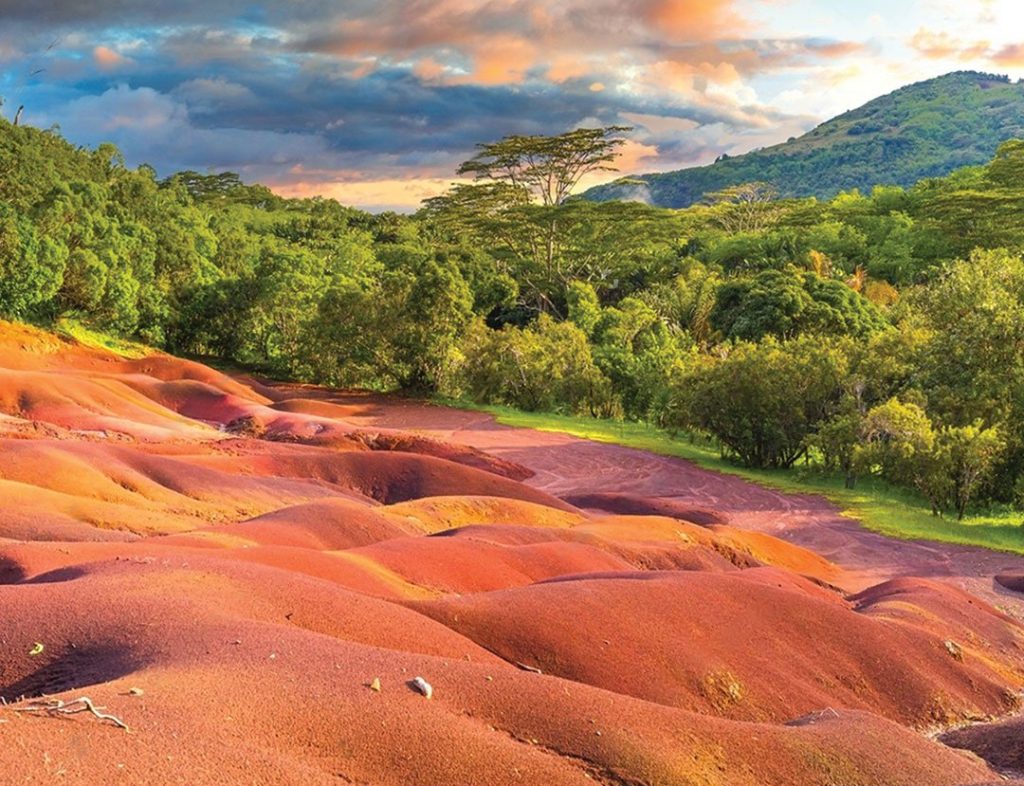
Seven Coloured Earth Chamarel
The Seven Coloured Earth in Chamarel is one of Mauritius’s most remarkable natural wonders, famous for its strikingly colorful sand dunes. This unique geological formation displays a stunning spectrum of colors, including red, brown, violet, green, blue, purple, and yellow. The phenomenon is a result of volcanic activity, where minerals in the soil cooled at different temperatures, creating the layered hues visible today.
Located in the village of Chamarel in the southwest of Mauritius, the site has become a popular tourist attraction and a celebrated symbol of the island’s natural beauty. The colors remain vividly separated even when the sands are mixed, adding to the site’s mystery and allure.
Surrounded by lush tropical vegetation, the Seven Coloured Earth is not only a captivating natural formation but also an example of Mauritius’s rich geological history. The site reflects the island’s volcanic origins and continues to fascinate visitors with its otherworldly appearance.
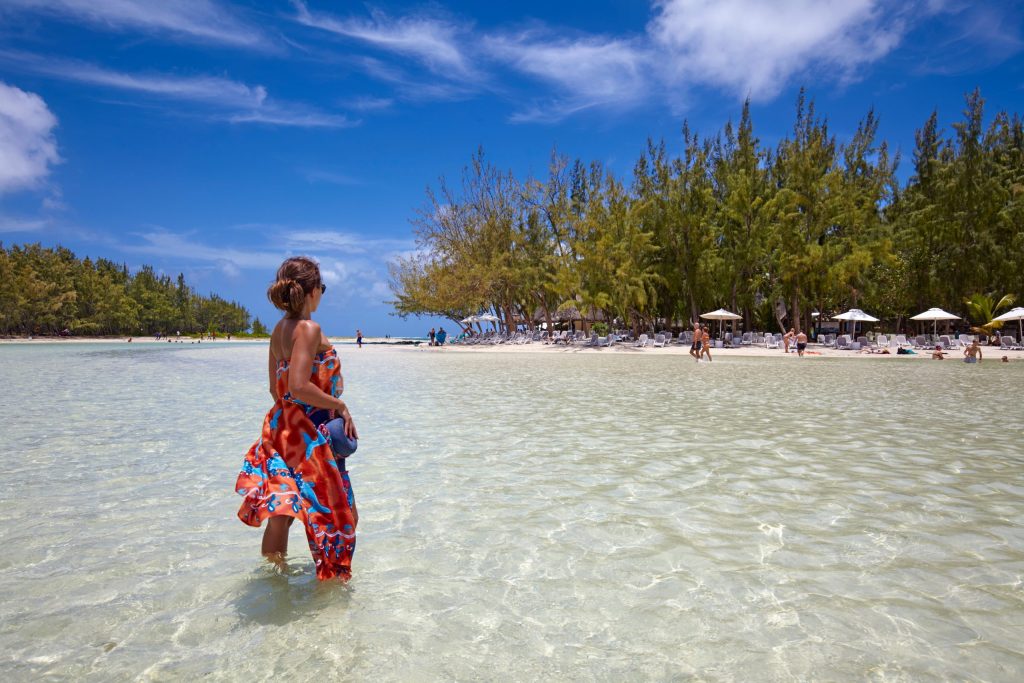
Iles aux Cerfs
Île aux Cerfs is a stunning natural island off the east coast of Mauritius, known for its pristine white sand beaches, turquoise lagoons, and lush greenery. Its name, which translates to “Deer Island,” dates back to a time when the island was home to Java deer, introduced to Mauritius by early settlers. Though the deer no longer roam there, the island retains its name and remains a beloved attraction.
Popular among tourists and locals alike, Île aux Cerfs offers a variety of water sports, from snorkeling and parasailing to boat tours and swimming in the crystalclear waters. The island is also home to a renowned golf course, making it a paradise for both relaxation and adventure.
Île aux Cerfs embodies the natural beauty of Mauritius, with its serene landscapes and vibrant marine life. It is a symbol of the island’s tropical allure and an ideal spot for enjoying the warm, picturesque atmosphere that defines the Mauritian coastline.
Source: https://www.google.com/imgres?q=iles%20aux%20cerf&imgurl=https%3A%2F%2Fwordpress.wihphotels.com%2Fmythic%2Fmedia%2Fsites%2F35%2F202
2%2F03%2File-aux-cerfs-ile-maurice-scaled.jpeg&imgrefurl=https%3A%2F%2Fwww.mythic-resort.com%2Fblog%2Ffr%2Fune-journee-a-lile-aux-cerfs%2F&docid=_
Exc97KafpltuM&tbnid=MX5lnAkumoXGSM&vet=12ahUKEwi95uzro4OIAxUPQ_EDHTZeJKIQM3oECGUQAA..i&w=2560&h=1707&hcb=2&ved=2ahUKEwi95uzro4OIAxUPQ_
EDHTZeJKIQM3oECGUQAA
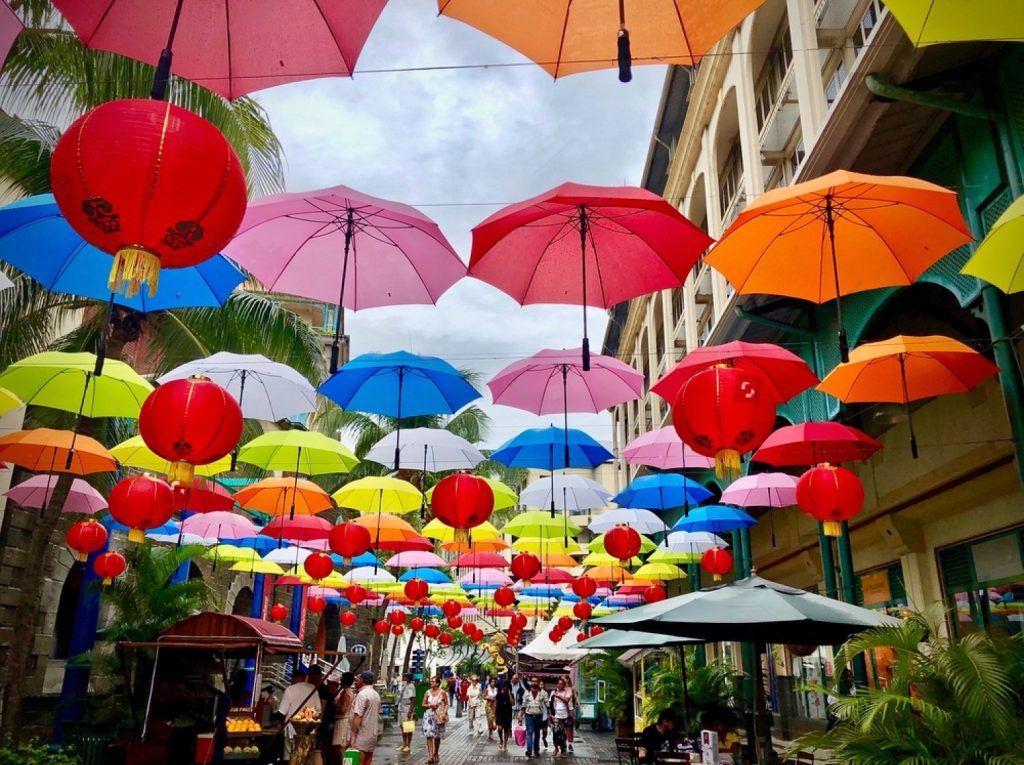
Port-Louis Caudant Waterfront
The Port Louis Caudan Waterfront is a vibrant and bustling area in the heart of Mauritius’s capital city, Port Louis. Overlooking the harbor, the waterfront is a popular destination for both locals and tourists, offering a blend of modern shopping, dining, and cultural experiences. The area is known for its picturesque setting, with colorful umbrellas providing shade along the promenade, creating a lively and inviting atmosphere.
Historically, the Caudan Waterfront has played a key role in the island’s development. It is located near the old port, which was a vital trading hub during the colonial period. Today, the Caudan Waterfront blends Mauritius’s colonial past with its contemporary flair, showcasing local art, crafts, and history. It’s a place where Mauritian heritage, modern commerce, and tourism meet, offering visitors a unique glimpse into the island’s rich culture and evolution.
Whether strolling under the umbrellas, shopping, or enjoying local cuisine, the Port Louis Caudan Waterfront remains a central landmark, reflecting the dynamic and multicultural spirit of Mauritius.
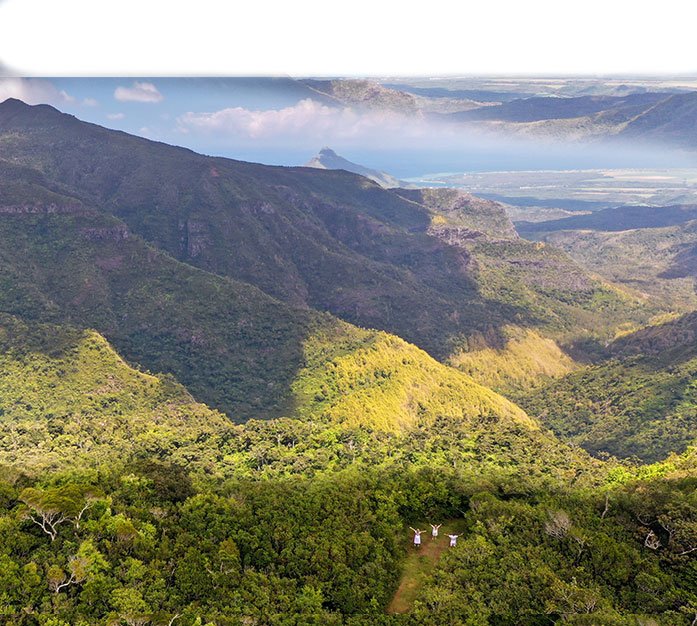
Black River Gorge
Black River Gorge is one of Mauritius’s most awe-inspiring natural sites, located in the southwestern part of the island. As the largest national park in Mauritius, it covers over 6,500 hectares of dense forest, deep ravines, and dramatic cliffs. The gorge is part of the island’s rich biodiversity and is home to unique plant and animal species, some of which are endemic to Mauritius, making it an important ecological area.
The Black River Gorge offers stunning panoramic views of lush green landscapes, cascading waterfalls, and rugged terrain. Its trails attract hikers and nature lovers who come to explore its diverse flora and fauna, as well as its volcanic history. The gorge’s deep ravines were formed by the island’s volcanic activity millions of years ago and have shaped the landscape into the striking scenery seen today.
This natural wonder is not only a sanctuary for wildlife but also a symbol of Mauritius’s untamed beauty and environmental significance, showcasing the island’s natural heritage for future generations to appreciate and protect.
Source: https://www.google.com/imgres?q=Black%20river%20gorge&imgurl=https%3A%2F%2Fa.travel-assets.com%2Ffindyours-php%2Fviewfinder%2Fimages%2Fres7
0%2F112000%2F112566-Black-River-Gorges-National-Park.jpg&imgrefurl=https%3A%2F%2Fwww.expedia.com%2FBlack-River-Gorges-National-Park-Mauritius.d6075550.
Vacation-Attraction&docid=yo1HtH58vuBMpM&tbnid=tyTMAofS2Z8kaM&vet=12ahUKEwiIgOG2poOIAxVJSPEDHSKyJJAQM3oECHAQAA..i&w=2560&h=1440&hcb=2&ved=
2ahUKEwiIgOG2poOIAxVJSPEDHSKyJJAQM3oECHAQAA
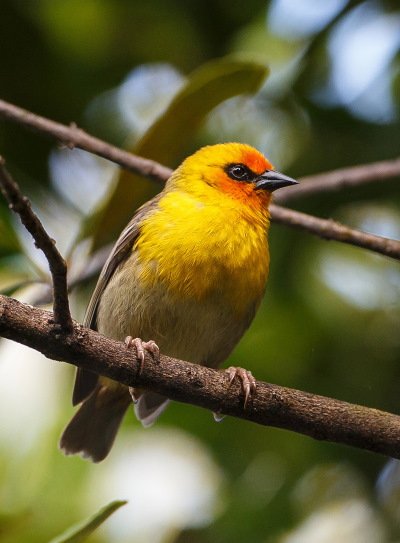
Birds
Mauritius is home to a rich variety of bird species, many of which are unique to the island. The island’s diverse ecosystems, ranging from tropical forests to coastal wetlands, have supported a wide range of avian life. Historically, Mauritius was known for its distinctive bird population, including the famous extinct dodo, which once roamed the island before being driven to extinction by early settlers and introduced species.
Today, Mauritius is still home to several endemic bird species, such as the *Mauritius Kestrel*, which was once considered the world’s rarest bird, and the *Pailleen-queue*, a seabird known for its long, trailing tail feathers. Conservation efforts have been pivotal in protecting these species, as the island’s birds have faced significant threats from habitat loss and the introduction of non-native predators.
The avian heritage of Mauritius is a testament to the island’s rich natural history and biodiversity. Through dedicated conservation, Mauritius continues to be a sanctuary for many of the world’s rarest and most fascinating birds, symbolizing the island’s commitment to preserving its unique ecological identity.

Maconde View
The Maconde View Point is one of Mauritius’s most iconic and breathtaking scenic spots, located along the southwestern coast near the village of Bel Ombre. Perched above the turquoise waters of the Indian Ocean, it offers panoramic views of the coastline, the lush green hills, and the nearby island of Île aux Benitiers. The viewpoint is particularly famous for its dramatic location, with a winding road that hugs the cliffs leading to a lookout that reveals stunning vistas of the ocean
and surrounding landscapes.
Historically, the area around Maconde has been an important part of the island’s tourism, offering visitors a glimpse into the natural beauty that defines Mauritius. The name “Maconde” is believed to be derived from the local term used to describe the shape of the landforms in the region. The spot has become a popular stop for both locals and tourists, who come to capture the mesmerizing views and experience the tranquility of the environment.
The Maconde View Point not only showcases the island’s natural splendor but also serves as a symbol of Mauritius’s pristine landscapes, drawing people from around the world to appreciate its unparalleled beauty.
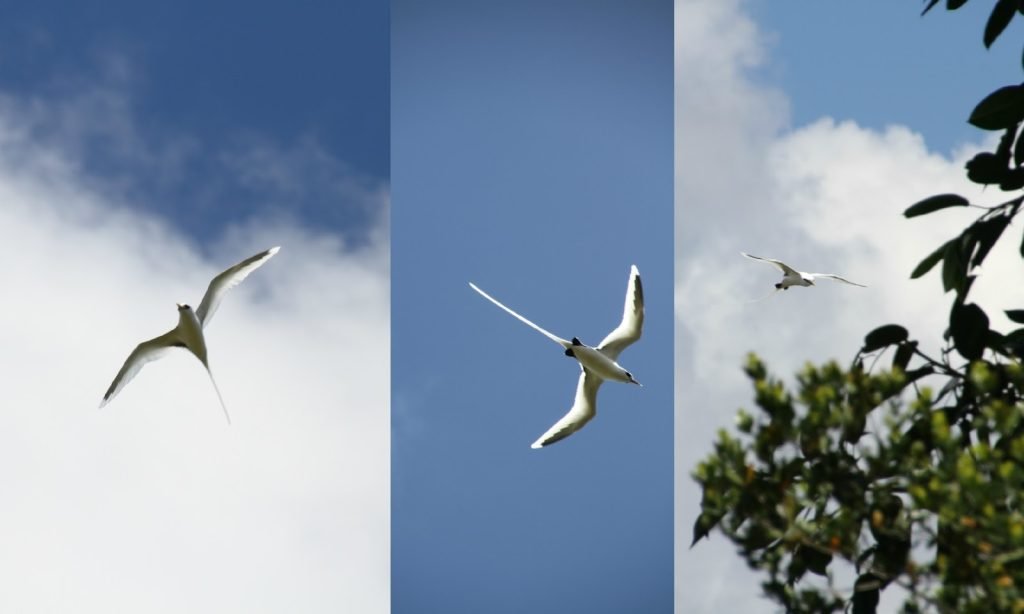
Paille en queue
The *Paille-en-queue* (or *Mascarenhas petrel*) is a striking seabird native to Mauritius, known for its graceful flight and distinctive long, trailing tail feathers, from which its name is derived. This bird, which inhabits the cliffs and rocky coastlines of Mauritius, is closely associated with the island’s natural heritage.
Historically, the *Paille-en-queue* has been an important symbol of the island’s rich biodiversity. Once abundant, its population dramatically decreased due to the introduction of predators and habitat destruction. Conservation efforts have since been made to protect this species and its nesting sites, particularly in areas like the Rodrigues and Ile aux Serpents islands, where they continue to breed.
The *Paille-en-queue* is not only a symbol of Mauritius’s ecological uniqueness but also a reminder of the importance of preserving the island’s fragile environment and the species that call it home. Today, the bird remains an admired and protected species, beloved for its beauty and resilience.
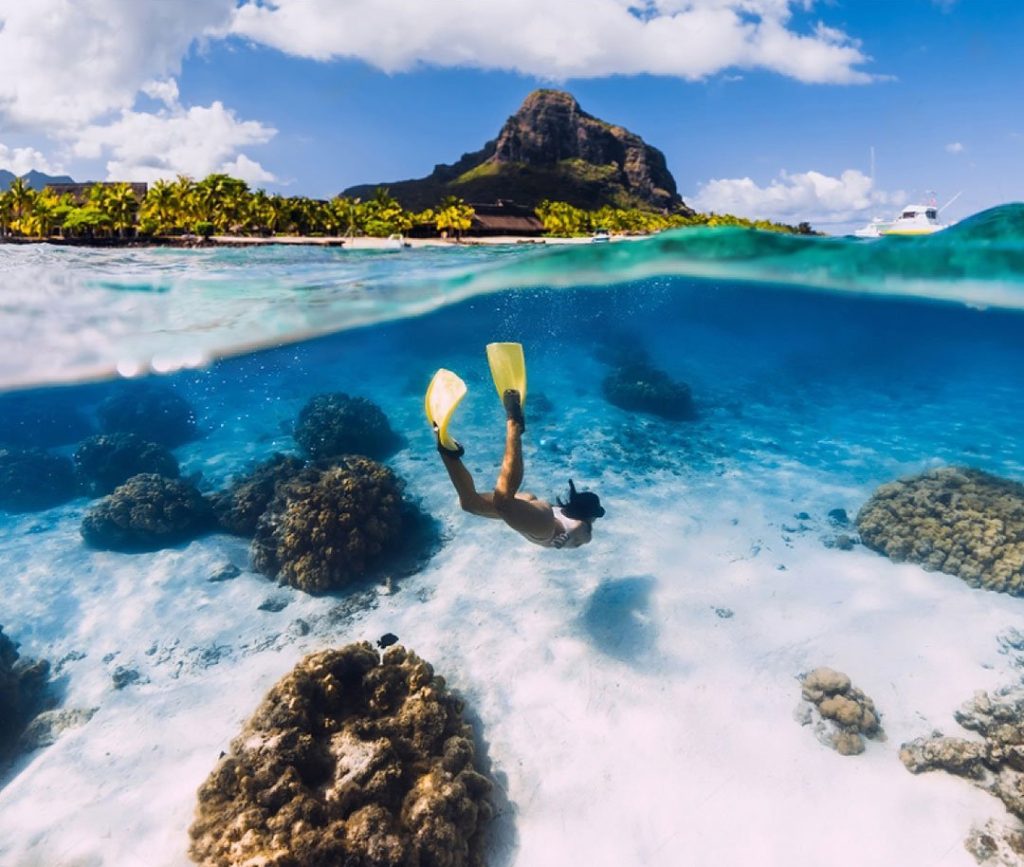
Le Morne Beach
Le Morne Beach, located on the southwestern coast of Mauritius, is renowned for its stunning natural beauty, and is a popular destination for both relaxation and water sports. The beach, framed by the majestic Le Morne Brabant mountain, offers crystal-clear waters, soft sand, and a calm atmosphere, making it ideal for activities like diving. Women diving in the clear, turquoise waters of Le Morne are often seen exploring its rich underwater ecosystem, which includes vibrant coral reefs and diverse marine life.
Historically, Le Morne has been a symbol of both resistance and freedom, with runaway slaves seeking refuge in the area during the colonial period. Today, the
beach stands as a tranquil spot, offering not only a connection to the island’s heritage but also a space for adventure and appreciation of Mauritius’s natural beauty.
Women diving over the sandy sea at Le Morne Beach represent both the island’s modern-day love for its natural wonders and the empowerment of women in exploring and protecting the marine environment. The beach continues to be a hub of eco-tourism, where visitors can engage with the island’s pristine ecosystems while also experiencing its rich cultural legacy.
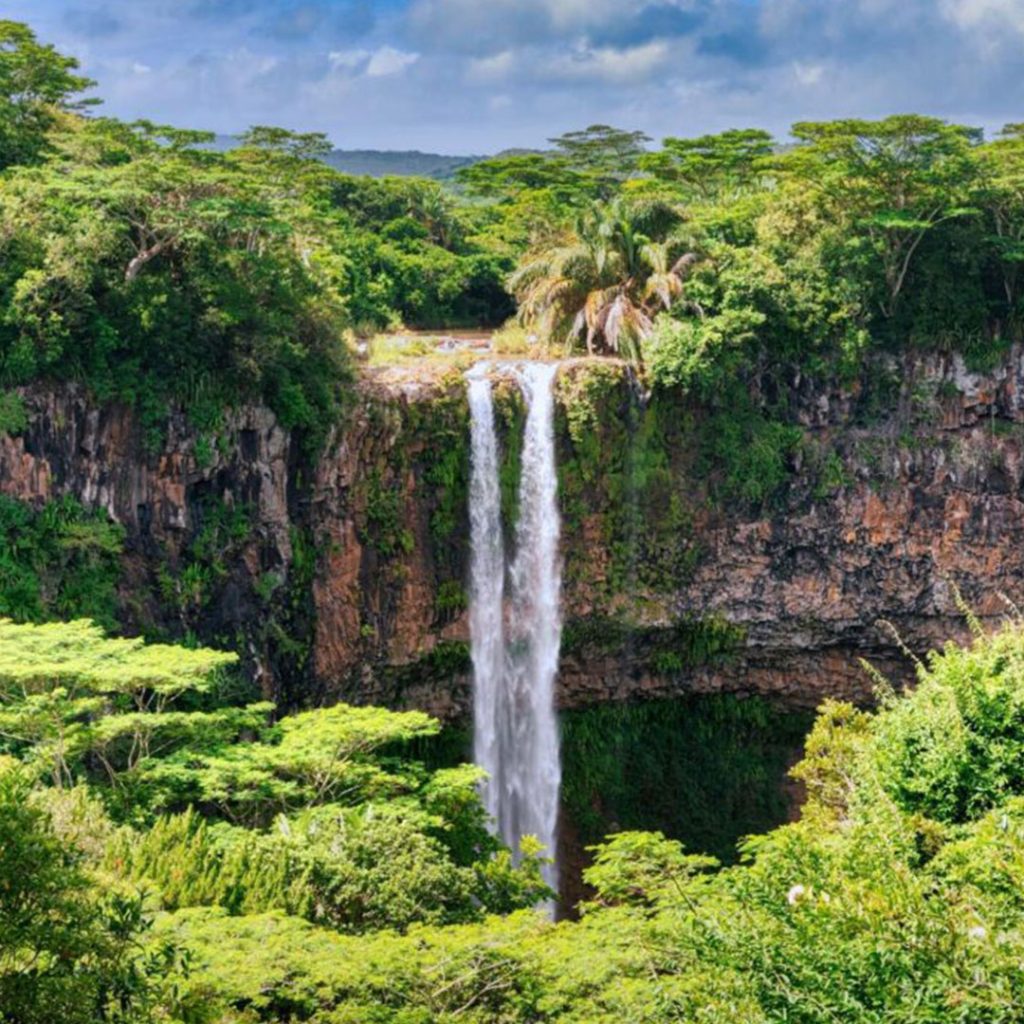
Chamarel Waterfall
The Chamarel Waterfall is one of Mauritius’s most stunning natural attractions, located in the village of Chamarel in the island’s southwestern region. Cascading from a height of approximately 100 meters, it is the tallest waterfall in Mauritius and is framed by lush tropical forest, adding to its breathtaking beauty. The waterfall’s origins trace back to volcanic activity, and it flows over basalt rock formations that are millions of years old, highlighting the island’s geological history.
Chamarel Waterfall is often visited alongside the nearby Seven Coloured Earth, as both sites showcase Mauritius’s unique natural landscapes. The waterfall is especially mesmerizing during the rainy season, when the increased water flow intensifies its powerful plunge.
A visit to the Chamarel Waterfall offers a glimpse into Mauritius’s natural wonders and serves as a reminder of the island’s volcanic origins, making it a cherished spot for both locals and tourists who appreciate its awe-inspiring scenery.

Trou aux cerfs
Trou aux Cerfs, meaning “Deer Hole” in French, is a prominent dormant volcanic crater located in the Curepipe district of Mauritius. This impressive geological feature, approximately 350 meters in diameter and 85 meters deep, offers breathtaking panoramic views of the surrounding landscape. Easily accessible by car, it’s a popular tourist destination where visitors can enjoy short walks along the crater
rim and capture stunning photographs of the dramatic scenery, making it a must-see for anyone exploring the island.
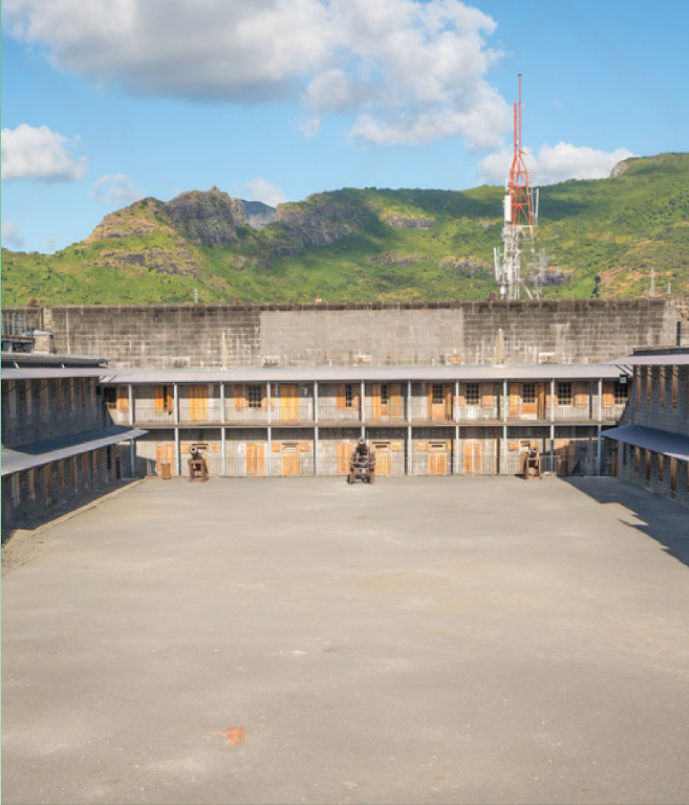
Citadel Fort
Heading to Port Louis for some much needed shopping? We approve of it but you might want to take a small break from the busy life of Port Louis and head to Citadel Fort for a little break. You will not be disappointed!
The construction of Citadel Fort began on 11th November 1830 and ended 10 years later on 4th November 1840 and was built in the honour of the wife of King William IV. Out of the four fortresses built by the British during the 19th century, it is only the Citadel Fort, also known as Fort Adelaide, that resisted the French invasion.
The Fort was originally built as a means to fortify the defense of Port Louis but was never used for that reason. It is now known as a famous spot for impressive views of the Capital. The Fort itself is an impressive sight. With the wall made of huge cut stones of basalt rocks, the Fort still holds some remnants from the past such as cannons.
However, the Citadel Fort is now famous for the 360-degree view of the Capital. Here, you will have a breathtaking view of the Capital and you get it from all the angles! You will have views of the China Town, Champ de Mars, and mountains all at one place. So pack your things and bring along your camera as panoramic pictures are a must at this spot!
Fort Adelaide is a very famous spot among locals who often visit it during the weekend for a small break or for jogging as it does have beautiful views for sunsets and sunrise hence we do recommend visiting during the week to avoid a crowd.
The little piece of historical architecture is sure to impress you, be sure to include it in your visit. We recommend including it in your visit to Port Louis.


